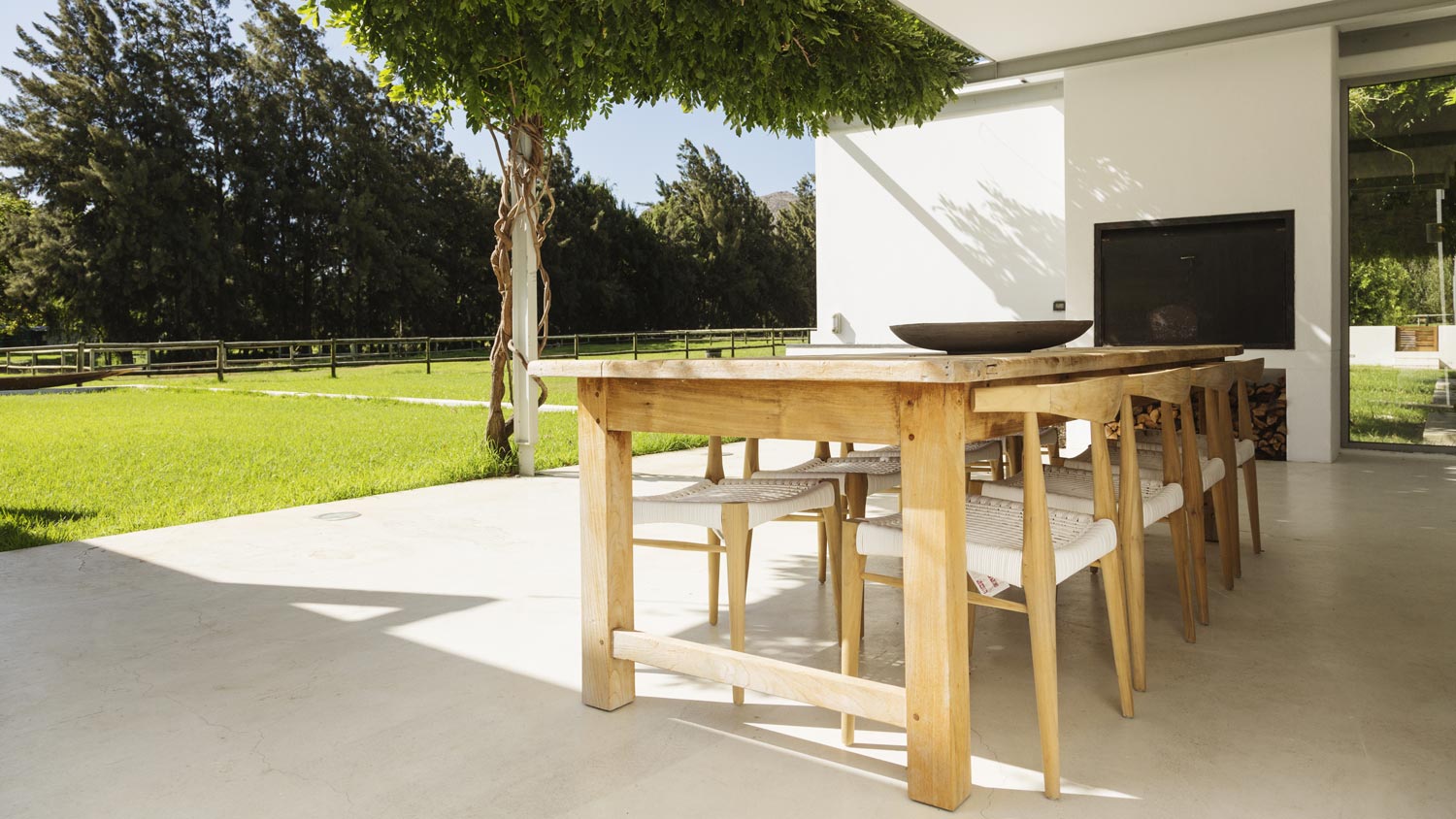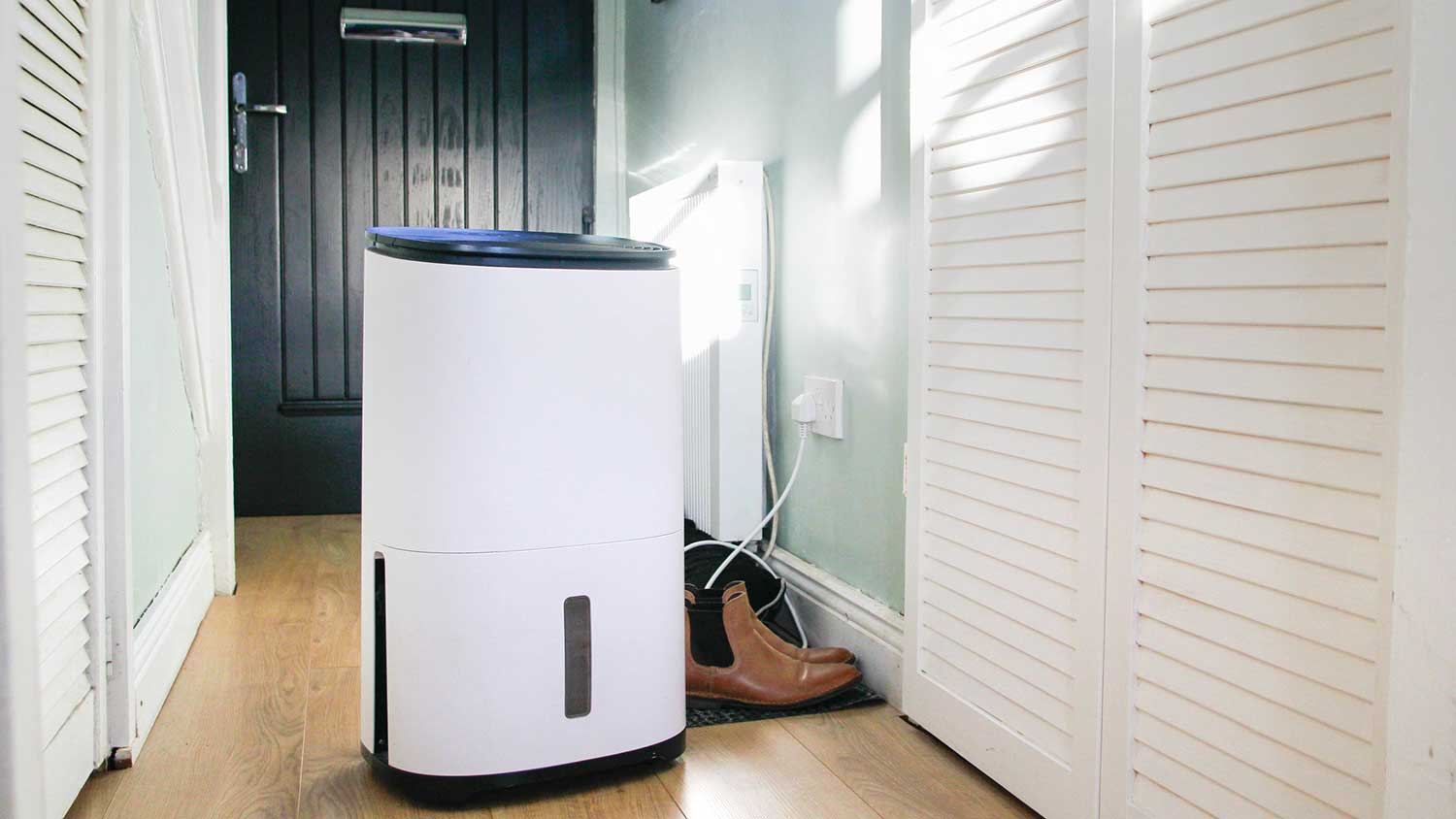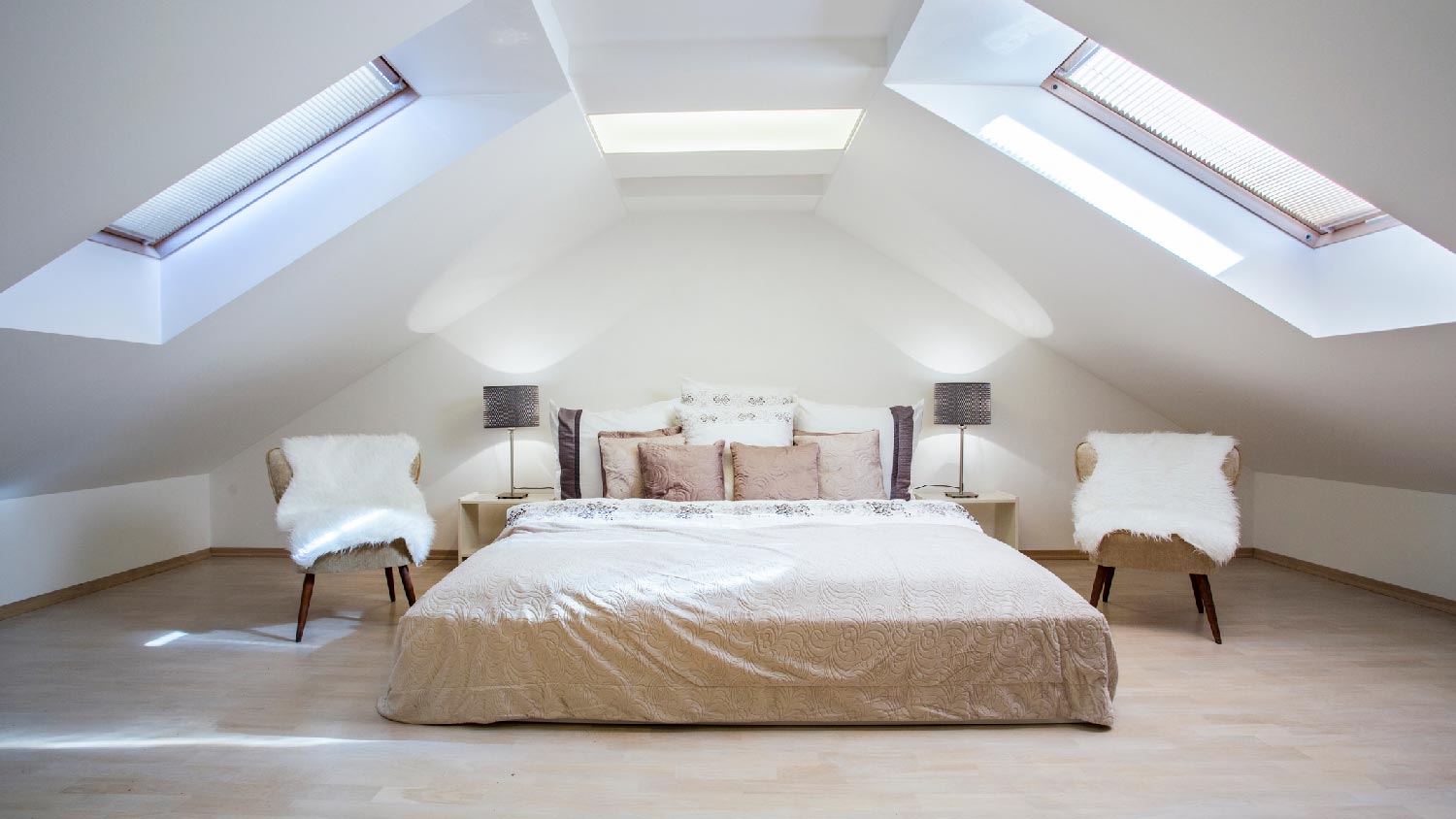6 Must-Know Tips for Installing a TV Outdoors
Watch a movie under the stars with this deck or patio upgrade


When the weather is pleasant, nothing rivals spending time outside. Imagine hosting a game-watching party or movie night on your deck or patio. Or picture taking in the news while waiting for your burgers to finish grilling. Make these dream scenarios a reality by installing an outdoor television for next-level outdoor living.
Here are six of the best outdoor TV setup tips to get your started.
1. Choose a TV
If you plan to keep your TV outside all year long, purchase a weatherproof television. These models are graded for the outdoors, made to withstand extreme heat, cold, humidity, dust, moisture, pollen, and insects. Composed of high-impact resin or powder-coated aluminum, they boast more durable exterior frames than traditional TVs. Plus, many have bright, non-glare LED panels. Plan on spending between $1,500 and $6,000 for these TV sets.
2. Pick a Location
Figure out where you’d like to place your outdoor TV setup. To keep it out of the way of water and heat, locate it at least six feet from your fireplace, grill, or pool. For further protection, situate it under a pergola or gazebo, or even a roof, or awning.
Ideally, the TV should not receive direct sunlight and should face north, so the sun is behind it. In case of any direct sun exposure, make sure it has a direct-sunlight-readable outdoor display with a high-temperature panel.
3. Select a Mount

You can mount a TV on an existing wall (on a deck, fence, or patio) or via a pole or the ceiling. Be sure to use a mount rated for the outdoors, as indoor mounts can deteriorate under the elements. Plus, outdoor mounts tend to be stronger and better able to handle outdoor TVs, which are usually heavier than traditional models.
For windier areas, consider an articulating wall or pole mount, which will let you tilt the TV for more viewing angles. Whichever mounting strategy you choose, make sure to install the TV high enough so viewers can easily see it.
4. Protect Your TV
Even if you purchase an outdoor TV, it’s wise to place it in a weatherproof cabinet to protect it from outdoor elements and would-be thieves. Look for one with caulked seams, weather-stripped perimeters, and lockable doors. As an alternative, you can secure your TV to a wall using a wall mount. Screw a strong cable into its back, place access caps over the screws, lock the cable loop ends together with a padlock, and secure the TV to the wall mount.
5. Wire Your TV
Hire an electrician to install the necessary wiring, including a ground-fault current interrupting (GFCI) outlet. Then decide if you’d like your outdoor cable setup to be wired or wireless.
Wireless cable is usually easier to set up. As an added plus, cable companies often offer small cable boxes that you can easily hide behind an outdoor TV setup.
That said, wired tends to be the most reliable way to connect your TV. If you go that route, you’ll need to purchase cables with a UV light-protective layer. You’ll also need to protect loose wires with outdoor-rated conduit or pipe coverings to prevent them from thinning and cracking outside. Consider a drip loop, a 180-degree loop that helps prevent water intrusion.
6. Install a Sound Bar
Unlike a secluded den, the outdoors is loud. You’ll need to contend with leaf-blowers, rumbling trucks, possibly noisy neighbors, and more. Put in a sound bar (wired or wireless) right below your TV to amplify the audio across your outdoor space.





- TV Stand vs. Wall Mount: Which Is Right for Your Home?
- How To Hire Someone To Mount Your TV on the Wall
- Should You Mount Your TV? 7 Crucial Considerations for Homeowners
- 42 Trendy TV Room Ideas
- 14 Absolutely Brilliant Ways to Hide the TV
- How High to Mount Your Flat-Screen TV
- How to Choose and Install the Right Television for a Bathroom
- 7 Tips to Keep Your Outdoor Kitchen Clean and Maintained
- How To Install Under-Cabinet Lighting: Step-by-Step Guide
- 12 Tips for Planning a Stunning and Cozy Outdoor Living Space










